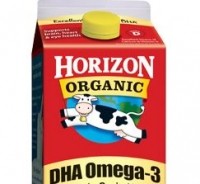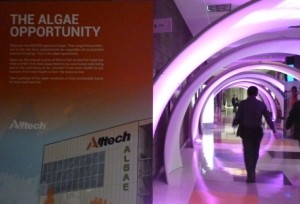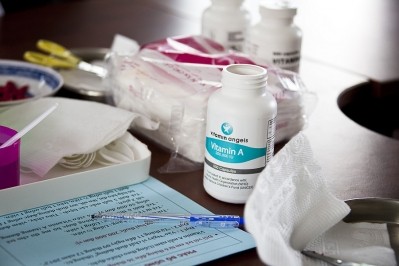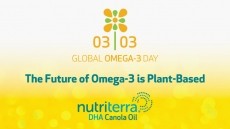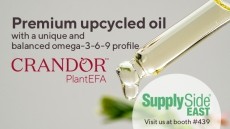Algal DHA, and where animal and human nutrition meet: What’s the best way to get your omega-3s? Pills, food fortification, or enrichment?
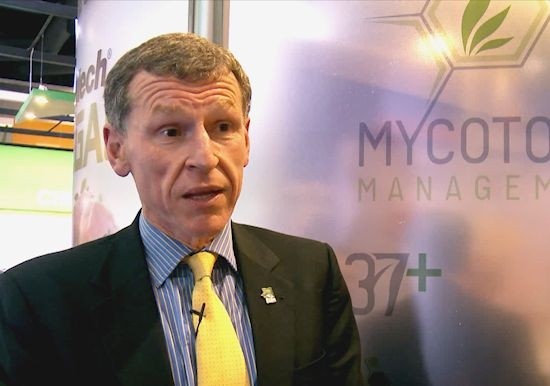
In the case of the coveted long chain omega-3 fatty acids EPA and DHA, however, the one food naturally rich in them is fish - which many people don’t like very much and others avoid altogether - or foods and beverages fortified with fish or algal oils.
But when it comes to exploring the potential of 'enriched' foods naturally high in omega-3s because they are from animals fed long-chain omega-3s, we have barely scratched the surface, according to animal nutrition giant Alltech, which says it is now possible to achieve meaningful levels of DHA in milk, eggs, and poultry meat with “surprisingly low” levels of feed supplementation (from 0.5 to 4%).
By meaningful, we’re talking chicken thigh meat with up to 175mg of DHA per 100g, chicken breast meat with 90mg of DHA per 100g and eggs with up to 137mg of DHA each, which shows that achieving the omega-3 dosages cited in the scientific literature is now realistic without having to swallow a bunch of softgels every night, claimed Alltech VP Steve Bourne, who was speaking to FoodNavigator-USA during the firm’s annual symposium in Lexington this week.
“There are lots of different ways to get your nutrients, and supplements are fine, but many consumers prefer to get them from foods that are naturally high in that nutrient, and manufacturers and retailers recognize that."
Fortification vs enrichment: 'Horizon wants to get the DHA into milk by feeding and going through the cow'
For example, the firm behind one high-profile omega-3 fortified product currently on the market - Horizon DHA Omega-3 milk (fortified with extracted algal DHA) - is now exploring how to produce an enriched product - ie. milk so that is naturally high in DHA, said Alltech director of applications research Rebecca Timmons.
"Horizon wants to get the DHA by feeding and going through the cow, and we are currently doing dairy trials to establish the levels of DHA that can be achieved by feeding our product. Our algae is a bit different because the oil is still inside the algae cell and we have shown that it is protected in the rumen."
Asked about beef, she added: "Most of our work has been in eggs, poultry and fish so far. Beef is a little more difficult... but we are also working on enrichment levels."
Our global yeast business is worth something like $500m, and we think algae could be even bigger
Alltech - which operates one of the world’s largest algae production facilities in Winchester, Kentucky - produces two algal products for the feed market: A carbohydrate-rich whole algae powder called Mycosorb A+ that binds to mycotoxins in animals (to stop them exerting harmful effects), and a DHA-rich whole algae powder dubbed SP-1 (from the Schizochytrium strain of microalgae).
The volumes produced at Winchester - 10,000 tons of dried biomass a year - might seem modest in the scheme of things, but look considerably more impressive after accounting for the fact that Alltech only entered the algae market in 2011 after acquiring the plant from Martek BioSciences (now part of DSM) in 2010.
Moreover, demand is growing so rapidly that Alltech now believes algae could represent a bigger commercial opportunity than yeast - which it has been producing for years - claimed Bourne.
“We’re already thinking about where to build our next plant. It’s incredibly exciting, and we’ve barely scratched the surface.”
Some farmed fish is not as good for you today as it was five years ago
But who’s buying, and why?
At this stage, Alltech’s customers (farmers and feed mills) are primarily interested in the algae products for animal nutrition and performance - that is, healthier, more fertile animals with stronger immune systems - he said.
However, conversations with food manufacturers and retailers about enrichment - marketing foods from animals whose feed has been supplemented with SP-1 - are now beginning.
“This process ideally needs to be top down - starting with the retailer or manufacturer.”
A good example of a firm that has embraced the enrichment approach is UK-based retailer Marks & Spencer, which has been marketing omega-3-rich eggs from birds fed with algal DHA for some time and is exploring a similar approach with other products including pork, chicken, dairy products and farmed salmon, he said.
Counter-intuitively perhaps, one of the biggest opportunities for algal-based DHA-rich feed is in aquaculture, as farmed fish are now fed less fishmeal and more omega-6-laden vegetable oils, to the extent that “fish is not as good for you today as it was five years ago”, he added.
For example, in 2005, most farmed trout sold in stores contained around 15% EPA/DHA, a figure that dropped to just 6% three years later, he claimed.
"By working with other entities within the food chain, principally processors and retailers, there is growing interest to be able to redress this imbalance in a way that can benefit the health and performance of the animal, the consumer, and indeed the environment."
It’s hard to think of any other organism that can grow as fast, and as efficiently
As to the broader potential of algae, Alltech global quality manager Kyle Raney said it was hard to think of any other organism that can grow as fast, and as efficiently (algae can triple or quadruple their biomass every day) that is as diverse, with more than 800,000 species, all with very different qualities.
Meanwhile, some species can even be grown autotrophically (via photosynthesis in the presence of sunlight), or heterotrophically (without sunlight, and feeding off sugars and starches), with very different results, he said.
The Winchester plant is designed to produce heterotrophic algae grown in large stainless steel tanks containing water, sugar and other nutrients.
“When the algae are ready to be harvested, they are transferred to centrifuges to remove most of the growth solution and then to spray dryers where they are dried and turned into powder.”
Founded by Dr. Pearse Lyons in 1980, Kentucky-based Alltech - which now generates revenues topping $750m - is an expert in yeast fermentation and enzyme technology, and says it is on track to reach its revenue target of $4bn by 2016.
